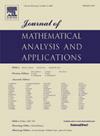轨道计数的sofic移位翻转系统
IF 1.2
3区 数学
Q1 MATHEMATICS
Journal of Mathematical Analysis and Applications
Pub Date : 2025-08-29
DOI:10.1016/j.jmaa.2025.130021
引用次数: 0
摘要
软移是一个离散的动力系统,它由与标记图中的路径相对应的双无穷标记序列组成。如果它服从一个称为翻转的自同构,那么它就形成了一个sofic移位-翻转系统。将翻转系统看作是无限二面体群对空间位移的作用。有限轨道在这一作用下的分布可以表明翻转系统的复杂性。为此,用素数轨道计数函数来描述有限轨道的增长。在文献中,得到了有限型移位-翻转系统(sft -翻转系统)计数函数的渐近性态,sft -翻转系统是广义移位-翻转系统的一个子类。在这篇论文中,我们将证明一个类似的渐近结果对于一个软移位-翻转系统。该证明依赖于底层SFT-flip系统的构造,作为sofic shift-flip系统的表示。然后通过组合计算从sft翻转系统中估计出所述系统中的有限轨道数。我们在这里的发现是完整的,因为它既适用于不可约的也适用于可约的软移。本文章由计算机程序翻译,如有差异,请以英文原文为准。
Orbit counting for sofic shift-flip systems
A sofic shift is a discrete dynamical system which consists of bi-infinite sequences of labels corresponding to paths in a labeled graph. If it is subjected to a certain automorphism called a flip, then it forms a sofic shift-flip system. The flip system is regarded as an action of infinite dihedral group on the sofic shift. The distribution of finite orbits under this action may indicate the complexity of the flip system. For this purpose, the prime orbit counting function is used to describe the growth of the finite orbits. In the literature, the asymptotic behavior of the counting function has been obtained for shift-flip systems of finite type (SFT-flip systems), which are a subclass of the sofic shift-flip systems. In this paper, we will prove a similar asymptotic result for a sofic shift-flip system. The proof relies on the construction of an underlying SFT-flip system to serve as a presentation of the sofic shift-flip system. The number of finite orbits in the said system is then estimated from the SFT-flip system via combinatorial calculations. Our finding here is complete since it is applicable to both irreducible and reducible sofic shifts.
求助全文
通过发布文献求助,成功后即可免费获取论文全文。
去求助
来源期刊
CiteScore
2.50
自引率
7.70%
发文量
790
审稿时长
6 months
期刊介绍:
The Journal of Mathematical Analysis and Applications presents papers that treat mathematical analysis and its numerous applications. The journal emphasizes articles devoted to the mathematical treatment of questions arising in physics, chemistry, biology, and engineering, particularly those that stress analytical aspects and novel problems and their solutions.
Papers are sought which employ one or more of the following areas of classical analysis:
• Analytic number theory
• Functional analysis and operator theory
• Real and harmonic analysis
• Complex analysis
• Numerical analysis
• Applied mathematics
• Partial differential equations
• Dynamical systems
• Control and Optimization
• Probability
• Mathematical biology
• Combinatorics
• Mathematical physics.

 求助内容:
求助内容: 应助结果提醒方式:
应助结果提醒方式:


